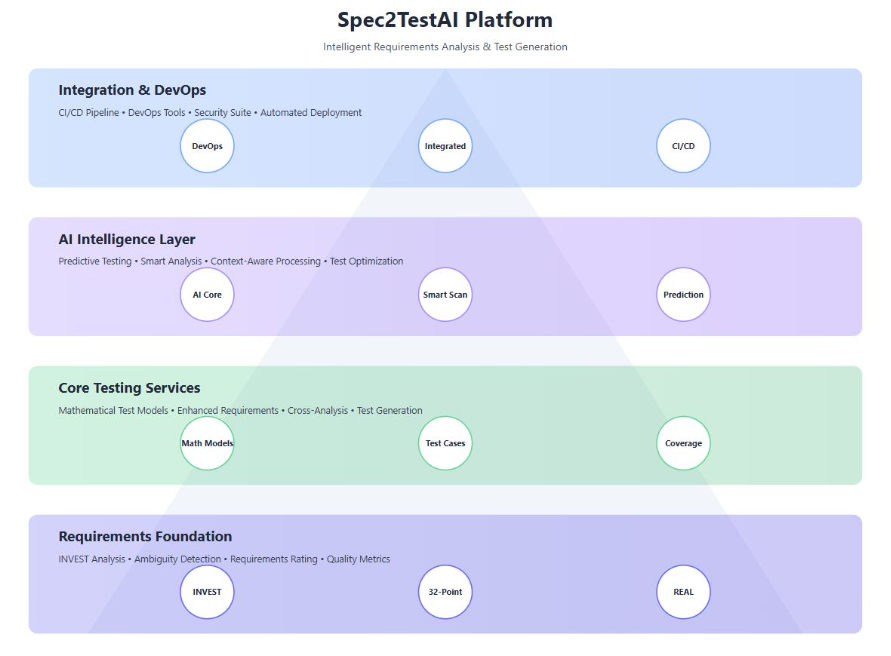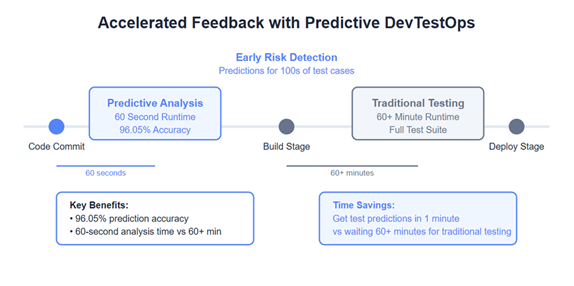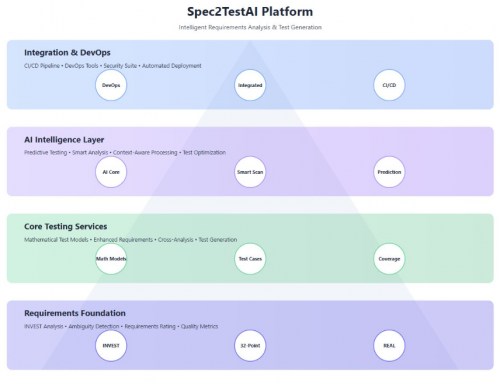Blog
AgileAI Labs Is Announcing The Launch Of A New Testing Method: Predictive DevTestOps
AgileAI Labs | January 7, 2025
What’s the next big leap in software testing innovation? AgileAI Labs is launching Predictive DevTestOps and it will absolutely change the way test planning is approached.
Introduction
Today, as AI based coding co-pilot tools enable software developers to produce code at unprecedented speeds, organizations face a critical challenge: testing efforts cannot keep up with the pace of AI-accelerated development. Traditional testing approaches—though proven over decades—are largely reactive, relying on post-development test runs and instrumented coverage tools. As a result, defects often surface late in the pipeline, leading to expensive rework and time-to-market delays.
Enter Predictive DevTestOps: a novel approach that proactively predicts test outcomes and evaluates coverage before code execution ever occurs. By leveraging an advanced AI engine that “walks through” code and test artifacts statically, Predictive DevTestOps addresses the modern QA bottleneck—cutting costs, improving speed, and mitigating the risk associated with AI-generated code.
The AI Development Explosion
Rapid Code Generation
Generative AI tools (e.g., GitHub Copilot, ChatGPT, and domain-specific coding assistants) are helping developers ship features 30–50% faster, according to recent surveys from Gartner and Forrester.
For businesses, faster development cycles promise quicker product launches, more frequent iterative releases, and potentially higher revenue streams.
The QA Bottleneck
Legacy QA Approaches: Even with modern automation, QA still depends on either (1) test runs in dedicated environments, or (2) partial static analysis that identifies only style errors or certain security flaws.
Inevitable Delay: The result is a reactive test cycle that often struggles to keep pace with AI-accelerated code commits, bottlenecking continuous integration and continuous delivery (CI/CD) pipelines.
The Unsolved QA Challenge
Scale vs. Quality
As AI co-pilots multiply developer output, test coverage and cycle times either must scale accordingly or risk leaving gaping holes in quality. The challenge:
• Exponential Code Increase: More lines of code in less time.
• Limited QA Resources: QA teams typically grow linearly—if at all.
• Rising Defect Complexity: AI-generated code can introduce bugs that standard test automation struggles to detect.
Traditional Solutions Fall Short
Instrumented Code Coverage (e.g., JaCoCo, Istanbul, etc.): Requires running tests post-commit; easily overwhelmed by frequent AI-driven commits.
Static Analysis Tools: Limited to certain rule sets or patterns; generally do not predict test outcomes or show how the code would behave under varied scenarios.
Predictive DevTestOps: The Novel Invention
Predictive DevTestOps leverages our patent pending process to simulate test runs at the source code level, providing:
Rapid Feedback Loop
• Delivers instant QA feedback to agile team members enabling real-time bug fixes before code merges.
• Aligns with DevOps’s shift-left principle, strengthening early defect prevention.
Unlike traditional static analysis—which might highlight style errors or potential security vulnerabilities—Predictive DevTestOps goes further by acting as a surrogate for the entire QA pipeline. It predetermines how tests will likely behave and where coverage lacks.
Quantifiable Gains: Business & Technical Impact
Faster Time‐to‐Market
• Condensed Test Cycles: By removing the bottleneck of iterative test runs, releases can happen more frequently.
• Continuous Integration Harmony: Real-time predictions integrate seamlessly with CI pipelines, allowing merges and deployments to proceed confidently.
Substantial Cost Savings
• Reduced Rework: Early detection of defects saves on rework budgets.
• Smaller QA Footprint: Freed from running endless test cycles, teams can be more strategic—focusing on exploratory testing, advanced security analysis, or user‐experience validation.
Predictive DevTestOps is an innovation that aligns perfectly with Capers Jones’s decades-old principle: the earlier you detect a defect, the cheaper it is to fix. What’s new is that we’re applying AI to do this at scale and pace never before possible.
Reduced Risk & Greater Stability
• Proactive Defect Prevention: Finding defects before merges not only slashes the cost of failure but also protects brand reputation.
• Real‐Time Risk Assessment: Executives gain a dashboard that quantifies “high‐risk code changes” and coverage blind spots—critical for compliance and auditing needs.
Alignment with AI Trend
• Future‐Proof: As AI coding tools accelerate, the QA methodology must adapt equally. Predictive DevTestOps sets the standard for how QA can evolve in tandem with generative development.
• Scalable & Adaptive: No major retooling needed when your dev tech stack changes.
But, how accurate is it really?
Testing tool vendors are famous for inflating their test platform’s results. We understand this. After all, predicting test outcomes before execution seems almost too good to be true. So we put Predictive DevTestOps to the ultimate test: a real-world simulation on what would be a mission-critical flight booking application where even minor errors could have major consequences. The results were excellent.
Across an exhaustive trial of 15,333 predictions spanning 75 unique test cases, the system didn’t just perform well—it shattered expectations. While most production-grade machine learning systems struggle to achieve Matthews Correlation Coefficients (MCC) above 0.8, Predictive DevTestOps scored an astounding 0.929 score.
But the real story lies in the consistency. Over 205 continuous test runs, the system maintained a historical accuracy of 96.05%—and here’s the kicker—it’s getting better. Recent accuracy has climbed to 96.53%, with precision at 97.20% and recall at 96.74%. These aren’t just numbers; they have the potential to represent thousands of hours of testing time saved, countless potential bugs caught earlier, and development teams freed to focus on innovation rather than repetitive testing cycles.
Perhaps most remarkably, in an industry where “flaky tests” are accepted as an unavoidable headache, Predictive DevTestOps achieved 97.39% average consistency, with only 12% of test cases showing any form of flakiness. And with false positive and negative rates both below 5%, backed by a confidence interval of 95.22% to 97.84%, the system has proven itself to be not just accurate, but reliably accurate.
Conclusion
This isn’t about replacing testing – it’s about adding an intelligent layer that gives your teams a big head start on every code change. For AI driven enterprises pushing multiple releases daily, this means catching issues earlier, reducing costs, and accelerating delivery without compromising quality.
Think of it as having a highly accurate weather forecast for your software development: you still need your umbrella (testing processes and procedures), but now you know exactly when to use it.
Capers Jones once emphasized that preventing defects at early stages can yield 100x cost savings compared to finding them post-deployment. In an age of AI-accelerated coding, Predictive DevTestOps takes that principle to the next level—enabling QA to keep pace (and where necessary, to move faster) than modern development streams.
Ready to see how Predictive DevTestOps can transform your software delivery? Contact us for a 1 on 1 demo.
Interested in our detailed technical whitepaper that provides the benchmark details of our platform’s accuracy? Contact our sales team (make a contact request on our website) for a copy.





